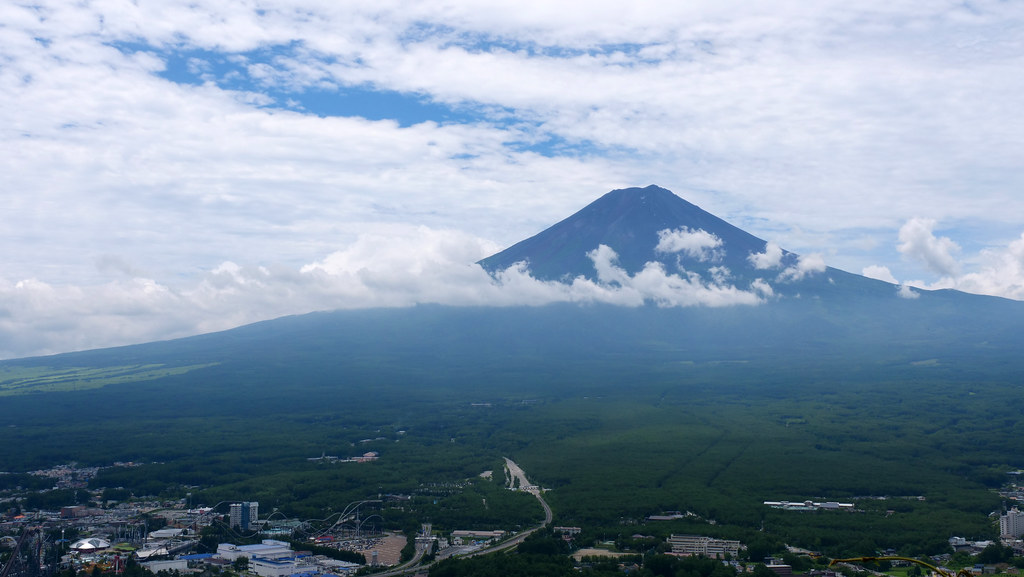
Mount Fuji is an active volcano in Japan and the country’s highest peak, rising to an elevation of 3,776.12 meters. This majestic volcano straddles Yamanashi and Shizuoka Prefectures, extending across several municipalities, including Fujiyoshida and Narusawa in Yamanashi, as well as Fujinomiya, Fuji, and Gotemba in Shizuoka. Its nearly perfect conical shape has made it one of the most iconic symbols of Japan, often regarded as a spiritual emblem and cultural totem of the nation.
Mount Fuji is a basaltic stratovolcano whose slopes follow graceful curves extending from its summit all the way to the coastline of Suruga Bay. It has influenced Japan’s climate, geology, and landscape, while serving as inspiration for countless works of art. Since ancient times, the mountain has been revered as a sacred peak. Its summit is said to be the dwelling place of the deity Konohanasakuya-hime (worshiped at Sengen shrines), and numerous Sengen shrines have been established for worship. This faith gave rise to the tradition known as Fuji Shinkō (Fuji Mountain Worship). Throughout history, ascetic practitioners and devotees, including those of the Murayama Shugendō and Fuji-kō sects, carried out pilgrimages and spiritual training on the mountain.
Every summer, Mount Fuji attracts large numbers of climbers who attempt to reach the summit, while its surrounding areas, such as Lake Kawaguchi and the Fuji Five Lakes, have developed into major tourist destinations. These areas are popular not only among nature lovers but also international travelers. In 2013, Mount Fuji and its related cultural sites were inscribed as a UNESCO World Cultural Heritage Site under the title “Fujisan, sacred place and source of artistic inspiration.”
Mount Fuji has been selected as one of the “Three Famous Mountains of Japan,” one of the “100 Famous Japanese Mountains,” and one of the “100 Geological Sites of Japan.” In 1936, it was incorporated into Fuji-Hakone-Izu National Park; in 1952, it was designated a Special Place of Scenic Beauty; and in 2011, it was recognized as a Historic Site, highlighting its dual significance in both natural and cultural heritage.
As for its name, the earliest record of Mount Fuji appears in the Hitachi no Kuni Fudoki as “Fukuji-dake.” Over time, different names have been used, such as “Fujisan” written with characters meaning “Not Two” or “Never Ending.” It is also referenced in The Tale of the Bamboo Cutter (Taketori Monogatari) in a legendary episode. The etymology of “Fuji” is debated: some theories trace it to ancient Japanese words describing a long slope, while others suggest origins from the Ainu language, Malay, or Polynesian languages, though no definitive conclusion has been reached.
Due to its revered status, place names containing “Fuji” can be found throughout Japan, such as Fuji City and Fujinomiya in Shizuoka, Fujiyoshida and Fujikawa in Yamanashi, and Fujimi City in Saitama, which means “Fuji-view.” Even overseas, Japanese immigrants have named mountains resembling Mount Fuji with titles such as “○○ Fuji,” demonstrating the mountain’s cross-cultural and international symbolic power.


